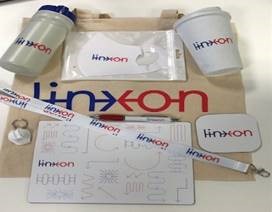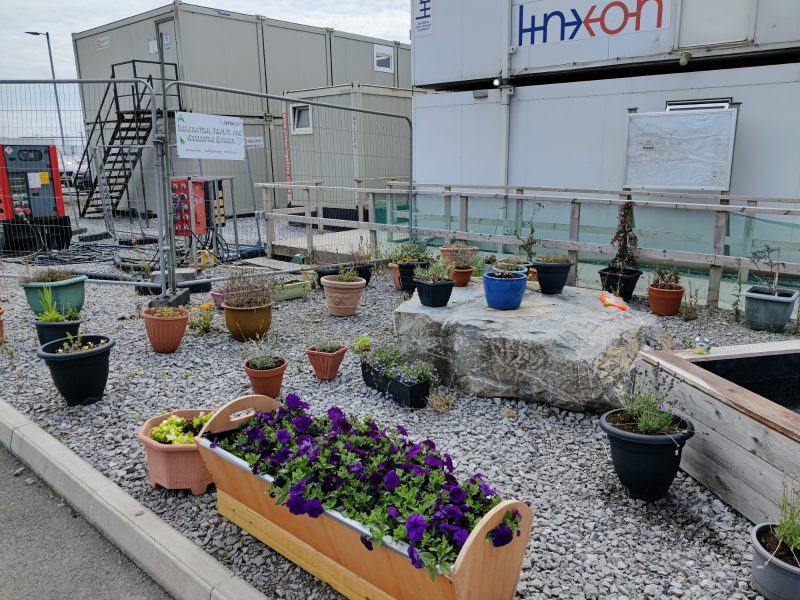Project highlights
Switchgear benefits
The compact indoor GIS technology for the substation:
- enables footprint reductions of up to 70 percent compared to conventional AIS designs
- is 33 percent lower in weight
- enables a reduction in the GIS hall building to 68m long and 14m wide
- offers cost savings for the customer
- makes extensions and retrofitting vastly less complicated in confined spaces
- increases supply reliability and availability, while reducing maintenance requirements
- offers a 40% reduction in SF6
has reduced commissioning time
Shurton 400 kV substation is a new build in Somerset, South West England, and part of the Hinkley Point C nuclear power station. Linxon has designed, manufactured and installed the GIS (gas-insulated switchgear) indoor substation, providing connections to existing substations at Taunton and Melksham. Hinkley Point C will be an integral part of the future UK power network and is projected to produce enough low-carbon electricity to meet the power requirements of about six million UK homes.
Sustainability designed in from the start
The way that Linxon and the Shurton Site Management Team have constructed Shurton substation – from design to re-use of surplus materials on site – exemplifies our commitment to and understanding of sustainability.
During the design stage, Linxon introduced several initiatives to reduce carbon. These include:
- The pre-assembled compact GIS equipment in 12 of the 18 GIS bays uses much less steel during both the manufacturing process and within the O&M gantries, in turn reducing the embodied carbon of the final as-built substation asset.
- The GIS foundations are a combination of isolated pads and GIS slabs, which reduce the required volume of concrete and rebar and the consequent embedded carbon.
Throughout the project, Linxon has focused on reducing its operational carbon on site – again, through several activities:
- Using eco-welfare cabins, which incorporate cutting-edge features to lower emissions, fuel use, noise pollution and maintenance requirements.
- Installing solar security lighting and cameras around site.
- Installing energy-efficient lighting in the buildings, including automatic lighting, and procuring an energy-efficient HVAC system.
- Using low-maintenance French drains for the drainage system. This includes a gravity-led system, providing carbon savings by reducing the amount of bedding and haunch materials.
Furthermore, spoil from the Shurton site – estimated to be around 18,000-19,000 tonnes – has not been classified as waste and has instead been diverted for re-use on the Hinkley Point C project to create a nature reserve from crushed stone, rock and shale.
Reduce, re-use, recycle
With the project reaching completion, Linxon has been able to identify all surplus materials – and find ways in which to support the local area and communities by upcycling them.
The local area – known as the Somerset Levels – is a landscape of rivers and wetlands and contains a rich biodiversity of national and international importance. However, to allow productive farming all year round, this land needs to be artificially drained, irrigated and modified.
Gaining insight into the local area helped the Linxon Shurton Team decide what to do with the material they had left. They contacted a local farmer and donated all the surplus material that would help the land and drainage, including stone, ducting and manhole rings.
The local farmer grows crops and is dependent on his crops not succumbing to floods. These materials will therefore be put to good use on his land which he has to drain, irrigate and modify.

Furthermore, Linxon have been working with Somerset Wood Recycling Scheme who undertake collection of wood, salvaging second-hand timber and turning it into handmade furniture, for example. They also re-use it in community-enhancing ways such as crafting and donating bug hotels, bird houses, bat boxes, and obstacle courses for local parks and schools. This scheme provides work-based training for long-term unemployed people and people with poor employment prospects – further underlining its value to the community.
Linxon has also utilised opportunities to donate wood from our packaging waste to local causes, such as the wood from the Gas-insulated busbar crates which was given to a local horse sanctuary for the purpose of reconstructing old stables and building new ones.
Healthier approach to plastic
Across the construction industry, addressing the issue of single use plastics on site has the potential to significantly reduce the waste generated by our workforce.
As we have numerous outdoor workers undertaking physical labour, providing adequate supplies of water is essential, particularly during hot and dry spells. With this in mind, Linxon celebrated Global Recycling Day last year by supplying all our Shurton and HPC employees with 100% recycled and reusable water bottles and thermal tumblers made from recycled milk bottles sourced from local council waste which would have typically gone to landfill. This same material is now also being used for our UK welcome packs for new employees.

Linxon has also made the refilling points more prominent to encourage the use of such bottles both on site and in the site office. In this way, all staff will remain hydrated and healthy while removing the use of water bottles with a high carbon footprint.
Making great places to work
When it comes to the topic of health, the Shurton site has been home to a wellbeing garden for over four years, developed and maintained by our site manager Sadina Keogh. The wellbeing area enables staff to have a break from the pressures of a construction site, while the garden has insect hotels to help insects survive the winter and a variety of pollen-rich plants to encourage them to come and feed.
Everything in the garden has been re-used or donated. This includes old filing cabinets and drawers left on site when we arrived which have been repurposed as planters, a pond created from re-used wooden packaging crates with solar-powered lighting and sprinklers to attract wildlife, and large rocks used for seating, which have been recovered during excavation works.
We have also encouraged more healthy eating habits by growing fruit and vegetables for staff to enjoy. The success of this initiative is assessed over the life of the project by undertaking yearly bee counts on site. Our operational delivery teams have also contributed plants, compost and ornaments and spend some of their break times tending the garden, further supporting our aim to enhance our people’s place of work.

